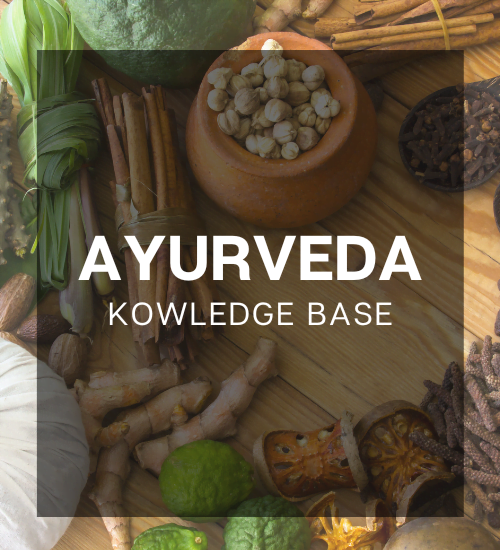No products in the cart.
Kamala (Jaundice)
Table of Contents

The disease in which patient lost desire to eat, sleep, do regular activities, sex etc., is coined as kamala in Ayurveda.
It is also termed with the meaning excretion of vitiated Pitta from the body (Ka-mala)
The symptoms goes on increasing as the disease becomes chronic-includes symptoms of nausea, vomiting, distension of abdomen, the colour of urine becomes yellow.
Lakshnas: Fever, burning sense all over the body, yellowish coloration of nails, eyes, skin,urine,face and stools, indigestion, weakness. The skin becomes dry, thick, lusterless like a frog’s skin.
Complications: Kumbha – kamala, halimaka, sotha, jwara, brama, murcha.
Avoid excess physical activity, heavy fatty food, spicy, hot pungent, oily food are restricted.
Intake of alcohol is strictly contra indicated.
Medication: Kamadugdha ras, sutasekhar ras, dadimadi ghritam, ushirasav, agastiharitaki.
Note: seek doctor advice for best results.
Types: Haemolytic, hepatocellular, obstructive jaundice.
Another type includes unconjugated hyper bilirubinimia and conjugated hyper bilirubinimia.
Another type includes medical jaundice and surgical jaundice.
It is also termed with the meaning excretion of vitiated Pitta from the body (Ka-mala)
Types: #
Two types includes- sakhasrita kamala & kosta-sakhasritha kamalaSakhasrita kamala: #
The disease originated in pittasaya, persists in rakta dathu and spreads all over the body due to obstruction of pitta from pittasaya due to intake of hard,heavy, cold and sweet food in excess, heavy exercise, continuous obstruction of natural urges which causes vitiation of kapha in body which inturn vitiates vata.Poorva roopa #
(prodromal symptoms): Gurgling sounds in abdomen, obstruction to the passage of gases & stools, reduced digestive capacity, heaviness in chest regions is observed.Roopa #
(Symptoms): As pachaka pitta gets obstructed in pittasaya, the stools becomes whitish in clour like a lof of sesame seeds, eyes,urine, skin become pale yellow in colour, pain in right upper area of abdomen, weakness,bachache, fever, loss of taste & appetite.The symptoms goes on increasing as the disease becomes chronic-includes symptoms of nausea, vomiting, distension of abdomen, the colour of urine becomes yellow.
Line of treatment: #
sodhana – deepana - samana chikista is advised with specific drugs.Kostha – shakhashrita kamala: #
This type of can occur as an independent disease or as a complication of pandu. Due to etiological factors pitha get vitiated and it burns out raktha and mamsa dhatu and spreads into external and internal pathways of body.Lakshnas: Fever, burning sense all over the body, yellowish coloration of nails, eyes, skin,urine,face and stools, indigestion, weakness. The skin becomes dry, thick, lusterless like a frog’s skin.
Line of treatment: #
Shodana – deepana – pachana – samanaComplications: Kumbha – kamala, halimaka, sotha, jwara, brama, murcha.
Kumba – kamala: #
This is the chronic stage of kamala. The symptoms become severe. Eyes, urine, stools become dark yellow or blakish in color. There is oedema on the body associated with joint pains and fever. This is very difficult to cure.Halimaka: #
In halimaka the color of skin becomes pale yellow or greenish black associated with weakness, loss of energy, reduced digestive power, low grade fever, absence of desire to do things, breathlessness, thirst, giddiness and body ache. It is incurable disease.Line of treatment for both complications: #
Snehana – virechana – samana oushadaPatya – apatya: #
Cow’s milk, fruit juices are advisable. Raw and bitter vegetables, butter milk, medicated and clarified butter and complete rest is advised.Avoid excess physical activity, heavy fatty food, spicy, hot pungent, oily food are restricted.
Intake of alcohol is strictly contra indicated.
Medication: Kamadugdha ras, sutasekhar ras, dadimadi ghritam, ushirasav, agastiharitaki.
Note: seek doctor advice for best results.
Modern view #
Jaundice:As a clinical term referring to the yellowish appearance of skin and mucous membrane resulting from an increased bilirubin concentration in the bodily fluids. It is detectable when the concentration of serum bilirubin is more than 3%.Types: Haemolytic, hepatocellular, obstructive jaundice.
Another type includes unconjugated hyper bilirubinimia and conjugated hyper bilirubinimia.
Another type includes medical jaundice and surgical jaundice.
Line of treatment: #
Treatment based on underlying cause.Updated on November 24, 2024
Powered by BetterDocs
 Doctor_Panel
Doctor_Panel






 INR
INR 



































